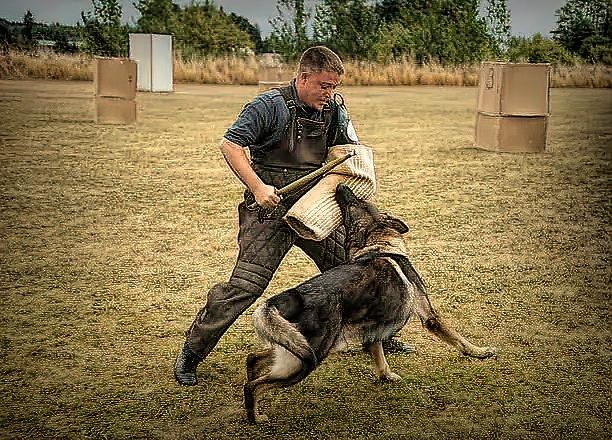NEW TSHIRTS AND K9 DRAGON FACTORY BRAND CLOTHING
Understanding the Dunning-Kruger Effect in Dog Training and Its Implications
Understanding the Dunning-Kruger Effect in Dog Training
K9 SCIENCEK9 LIFESTYLEK9 TRAINING
B Anderson
6/2/2024


Understanding the Dunning-Kruger Effect and Its Impact on K9 Trainers
The Dunning-Kruger Effect is a cognitive bias where individuals with limited knowledge or competence in a particular area overestimate their abilities, while experts tend to underestimate their relative competence. This phenomenon, named after psychologists David Dunning and Justin Kruger, highlights a critical gap between perceived and actual skills.
The Dunning-Kruger Effect Explained
At its core, the Dunning-Kruger Effect describes how individuals with low expertise in a field often lack the necessary insight to recognize their own shortcomings. This lack of awareness leads to overconfidence, as these individuals mistakenly believe they have a solid understanding of the subject. Conversely, those with extensive knowledge and experience tend to be more aware of the complexities and challenges within their field, often leading to a more measured and sometimes underestimated self-assessment.
How the Dunning-Kruger Effect Applies to K9 Trainers
In the realm of K9 training, the Dunning-Kruger Effect can manifest in several ways, impacting both novice trainers and seasoned professionals:
1. Novice Trainers:
- Overconfidence: New trainers may overestimate their understanding of dog behavior and training techniques after completing basic courses or observing a few training sessions. This overconfidence can lead to improper training methods, potentially causing confusion or behavioral issues in the dogs.
- Resistance to Feedback: Inexperienced trainers might dismiss constructive criticism from more experienced colleagues, believing their methods are correct. This resistance can hinder their growth and the effectiveness of their training programs.
2. Experienced Trainers:
- Underestimating Abilities: Veteran trainers, aware of the complexities and nuances of K9 behavior, may undervalue their expertise and feel less confident in their skills. This humility, while beneficial in continuous learning, might prevent them from sharing their valuable knowledge with others.
- Mentorship and Education: Experienced trainers can bridge the knowledge gap by mentoring newcomers and emphasizing the importance of ongoing education and self-awareness. This helps to mitigate the effects of overconfidence in novice trainers.
Mitigating the Dunning-Kruger Effect in K9 Training ?
To ensure effective and responsible K9 training, both novice and experienced trainers can take steps to address the Dunning-Kruger Effect:
- Continuous Learning: Encourage a culture of ongoing education and professional development. Attending workshops, seminars, and advanced training courses can help trainers stay updated with the latest techniques and best practices.
- Self-Reflection: Promote regular self-assessment and reflection on training methods and outcomes. Trainers should seek feedback from peers and mentors to identify areas for improvement.
- Mentorship Programs: Establish mentorship programs where experienced trainers guide novices, providing them with practical insights and fostering a realistic understanding of their skills.
- Encourage Humility: Cultivate an environment where humility is valued, and trainers are encouraged to recognize the limits of their knowledge and seek assistance when needed.
By acknowledging the Dunning-Kruger Effect and actively working to mitigate its impact, K9 trainers can enhance their skills, improve training outcomes, and ensure the well-being of the dogs under their care.
Social Media and the Dunning-Kruger Effect in Dog Training
Social media has dramatically transformed how information is disseminated and consumed, offering both benefits and challenges across various fields, including dog training. One notable impact of social media is its amplification of the Dunning-Kruger Effect. Here’s how social media influences this cognitive bias in the dog training community:
Amplification of Overconfidence
1. Easily Accessible Information:
- Superficial Learning: Social media platforms provide vast amounts of dog training content in the form of videos, posts, and articles. While this makes information more accessible, it often leads to superficial learning. Novice trainers might watch a few short clips or read simplified advice and believe they have mastered complex training techniques.
- Echo Chambers: Algorithms often push similar content to users, reinforcing their existing beliefs. Novice trainers might receive more of the same content that validates their limited understanding, further inflating their confidence without exposure to deeper, more nuanced knowledge.
2. Public Validation:
- Likes and Comments: Social media thrives on engagement. When novice trainers share their training successes online and receive likes, positive comments, and shares, it can create a sense of validation and overconfidence. This public approval may not always come from knowledgeable sources, reinforcing incorrect or incomplete methods.
- Influencer Culture: Some individuals become popular dog training influencers based on their social media presence rather than their actual expertise. This can mislead followers into thinking they are learning from credible sources, perpetuating overconfidence in flawed techniques.
Challenges for Experienced Trainers
1. Undervaluing Expertise:
- Overshadowed by Popularity: Experienced trainers who focus on scientifically sound methods might be overshadowed by more charismatic but less knowledgeable influencers. This can lead to undervaluing true expertise and the spread of misinformation.
- Misinterpretation of Complex Information: Nuanced training advice that requires in-depth understanding and experience may be misinterpreted or oversimplified on social media, leading to ineffective application and skepticism about its validity.
2. Combatting Misinformation:
- Effort to Educate: Experienced trainers may spend significant time and effort debunking myths and correcting misinformation spread by overconfident novices. This can be frustrating and time-consuming, diverting energy away from productive training and education.
Mitigating the Impact of Social Media
1. Promote Credible Sources:
- Highlight Expertise: Encourage following and engaging with certified, experienced trainers who base their methods on scientific research and proven results.
- Verify Information: Emphasize the importance of verifying the credibility of the information and the qualifications of the person sharing it.
2. Encourage Critical Thinking:
- Question Assumptions: Foster a dog training culture where trainers are encouraged to question and critically evaluate the training methods they see online. Encouraging discussions and debates can help highlight the complexity of dog training and the importance of continuous learning.
- Seek Diverse Perspectives: Expose oneself to a variety of training philosophies and techniques to avoid echo chambers and gain a more comprehensive understanding of dog training.
3. Use Social Media Responsibly:
- Share Knowledge: Experienced trainers can use social media to share their knowledge responsibly, providing clear, accurate, and practical advice. This helps counterbalance the spread of misinformation.
- Engage Constructively: Engage with the community constructively, offering constructive feedback and support to novice trainers while encouraging them to seek further education and certification.
By understanding and addressing the ways social media can amplify the Dunning-Kruger Effect, the dog training community can better navigate the digital landscape, promoting accurate information and fostering a culture of continuous improvement and self-awareness.
We can always learn new things, new ways and new approaches to our work. We should always do so with full awareness and understanding that we can always slip into "I thought I knew more than I did"
Brian


